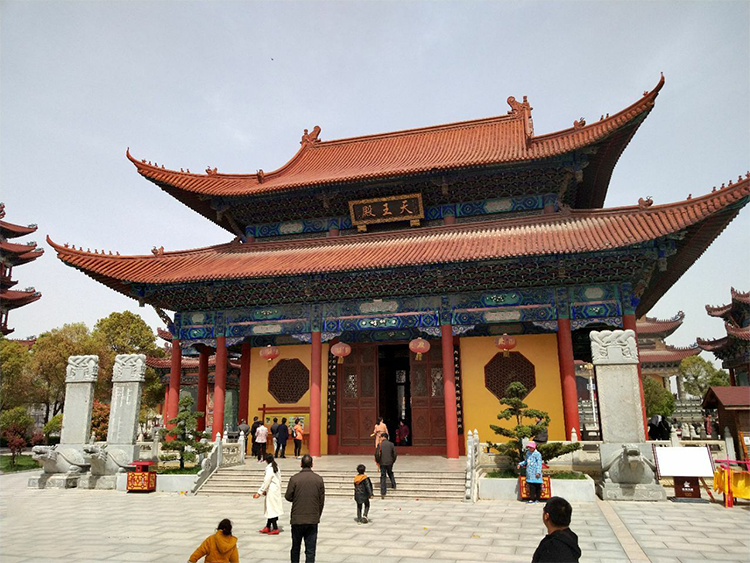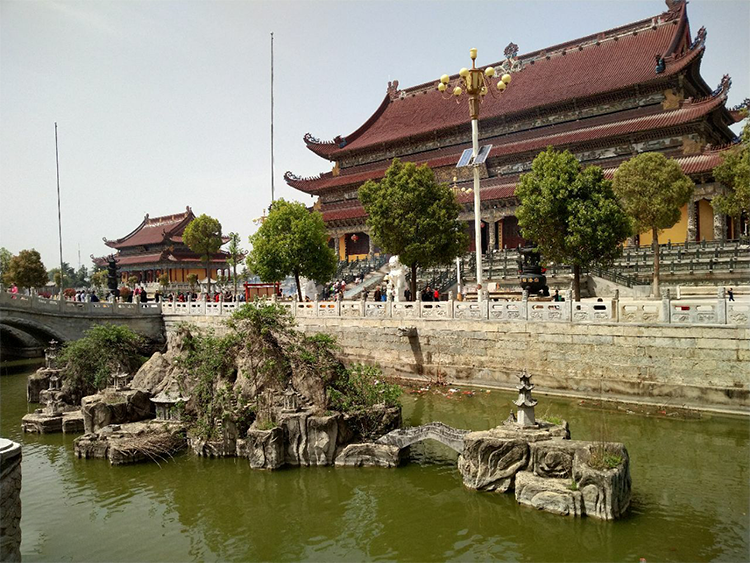Nanhai Zen Temple: Discover Chinese Temple Architecture at Asia’s Grand Buddhist Sanctuary
Introduction
On the vast plains of Runan County in Henan Province stands a majestic Buddhist sanctuary — Nanhai Zen Temple. As one of Asia’s largest Buddhist complexes, it blends Ming and Qing architectural artistry with a millennium of Buddhist tradition. Strolling through more than 500 acres of meditative grounds, gazing up at the 91-meter Shakyamuni Buddha, and listening to the echoing bell, visitors can feel transported through time, touched by the calm and power of faith.
1. Millennial Monastery, an Architectural Marvel of Asian Buddhism
Founded in the Ming dynasty (1545), Nanhai Zen Temple has weathered centuries to become a key symbol of Chinese Buddhist culture. Covering over 500 acres, the temple complex follows the model of Beihai Zen Temple and integrates Ming-Qing stylistic elements. Its strict central-axis layout and twelve successive halls display the solemn order of traditional Chinese temple architecture.
Key highlights:
– One of Asia’s largest Buddhist temples, with an expansive, orderly layout.
– The 91-meter Shakyamuni Buddha (including its base), towering and majestic over the grounds.
– The Mahavira Hall spans 5,270 square meters, featuring a multi-eaved hip-and-gable roof and enshrining the Buddhas of the Three Ages.
– Distinctive sights such as the Twelve Paifangs (memorial archways) and the Twelve Bodhisattva Bridge, reflecting deep Buddhist cultural roots.
2. Architecture and Art: Ming-Qing Treasures of Buddhism
(1) Central-axis layout: A progressing Buddha
Nanhai Zen Temple strictly follows the symmetrical central-axis layout typical of Chinese temples, arranged in sequence as:
– Shanmen (Mountain Gate): the first portal into the pure land, symbolizing escape from worldly disturbance.
– Hall of Heavenly Kings: houses the Four Heavenly Kings who protect the Dharma and guard the temple.
– Mahavira Hall: the temple’s core, with the Three Buddhas (past, present, future) seated solemnly and the Eighteen Arhats vividly depicted along the sides.
– Halls of Guanyin, Manjushri, and Samantabhadra: surrounding the Shakyamuni Buddha and representing compassion and wisdom.
(2) 91-meter Shakyamuni Buddha: a towering symbol of faith
The temple’s most dramatic sight is the gilded Shakyamuni Buddha, standing 91 meters high on its須彌座 (Sumeru base). With a compassionate expression gazing over the faithful, the statue glints in sunlight. Visitors can circumambulate along stairways to pay respects and absorb the statue’s serene presence.
(3) Twelve paifangs and the Bodhisattva Bridge: artistic expressions of Buddhist culture
The twelve carved paifangs throughout the grounds each tell Buddhist stories and teachings. The Twelve Bodhisattva Bridge spans the life-release pond, its balustrades engraved with bodhisattva figures — walking across feels like entering a pure land.
3. Religious Activities and Immersive Experiences
(1) Chanting and blessing ceremonies
Nanhai Zen Temple is both a tourist destination and a place of practice. Early each morning, monks chant in the halls; visitors may sit quietly to listen and experience the purifying calm of Buddhist recitation.
(2) Participating in rituals: offering incense and blessings
– Incense offering: Purchase incense within the temple, hold it with both hands at forehead level, silently make a wish, then place it in the censer.
– Lamp offering: Lighting a lamp symbolizes the light of wisdom and can be done in designated areas.
– Merit donations: Donation boxes are available for voluntary offerings to support temple upkeep and charitable activities.

4. Setting and Atmosphere: Zen and Nature in Harmony
Set on the plain with green trees and a gently rippling life-release pond, Nanhai Zen Temple radiates peacefulness. Visitors tend to be devout worshippers, cultural enthusiasts, and photographers — the temple maintains lively incense while preserving a respectful atmosphere.
Best times to visit:
– Early morning (6:00–8:00): Monks’ morning service; the atmosphere is at its calmest.
– Late afternoon (16:00–18:00): Sunset lights the golden Buddha, creating exceptional photographic moments.
5. Suggested Visit Plan
– Recommended duration: 2–3 hours; half a day if you want a deeper experience.
– Who should visit: Buddhism enthusiasts, architectural photographers, and travelers seeking inner peace.
– Nearby extensions: Combine your visit with Runan’s historic district or the Tianzhong Mountain Cultural Park for a full cultural day trip.
6. Practical Tips
– Dress code: Avoid short skirts and shorts; dress modestly and respectfully.
– Photography etiquette: Photos are generally allowed inside halls but avoid flash and keep noise to a minimum.
– Opening hours: 8:00–17:30 (check official notices for updates).
– Getting there:
– Public transport: Take local buses in Runan County to the “Nanhai Zen Temple” stop.
– By car: On-site parking is available for private vehicles.
– Language support: Main signs include Chinese and English; guided explanations may be available by appointment.

7. Local Insights
– Best viewing spot: The viewing platform at the foot of the Shakyamuni Buddha offers panoramic views of the entire complex.
– Watch out for: Beware of unofficial fortune-tellers or high-pressure “merit” sales; please respect the religious space.
Conclusion: A Spiritual Journey Across Time
Nanhai Zen Temple is more than an architectural spectacle — it is a spiritual hall of faith and wisdom. Whether you’re stunned beneath the 91-meter golden Buddha or find quiet on the Twelve Bodhisattva Bridge, the temple allows visitors to step away from noise and encounter the depth and peace of Buddhism. If you travel through Henan, consider entering this peaceful Buddhist realm and let your spirit settle in its Zen atmosphere.


